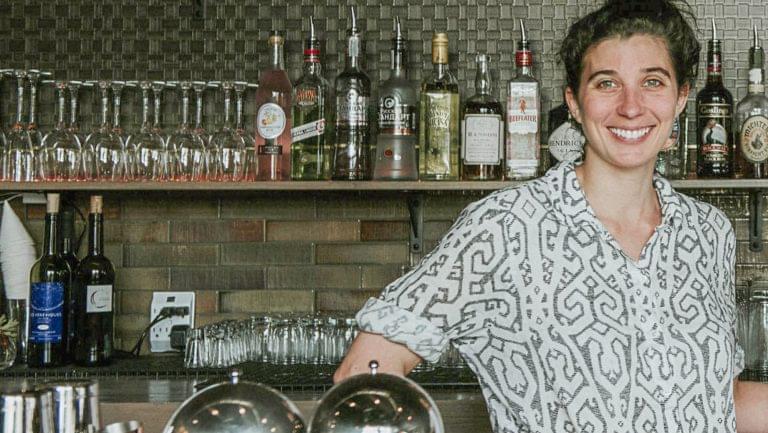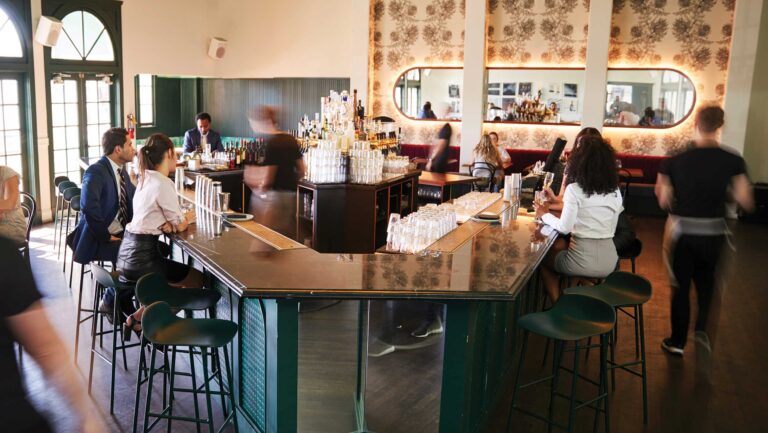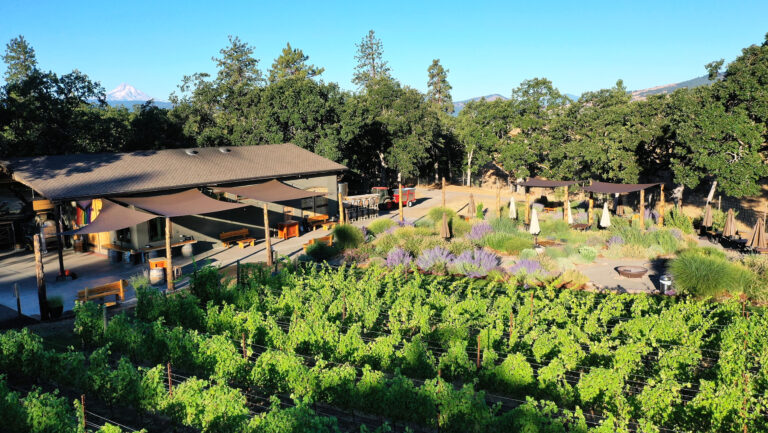Building a bar program for the first time can be a daunting task, with many potential pitfalls. It’s all too common for a new bar or restaurant to overindulge in cocktail ingredients, create an unbalanced menu, or underprice drinks that are costly to make. SevenFifty Daily spoke with veteran bar professionals around the country to get their take on best practices. Here, they share their tips for navigating the challenges—and setting novices up for success.
Know Your Concept
Developing a concept is the first step. Whether it’s a pre-Prohibition menu full of classic cocktails, or an avant-garde menu with house-made tinctures, nailing down the vision is fundamental. Abigail Gullo, the head bartender of Compère Lapin in New Orleans, says that there are three key parties to consider when developing a concept: “It’s all about knowing the expectations of the owners, the staff running the bar, and the guests.”
Gullo suggests that these three parties may not always be in sync, but as the one spearheading the bar program you want to do all you can to keep each group happy. Ask yourself, she says, “Am I fitting it to the concepts of the owners—and how much they want to make on cocktails?” She also advises considering your staff and how you’re going to prepare them for understanding the concept and making the cocktails. Finally, she says, “If the guests are happy, the sales are [likely to be] good and the owners, happy.”

Don’t miss the latest drinks industry news and insights. Sign up for our award-winning newsletters and get insider intel, resources, and trends delivered to your inbox every week.
Without that concept, you risk failure. Kimberly Marie Kopczynski, the bar captain at Beetlecat in Atlanta, says, “The most important things to know are your concept and your audience. If you make cocktails that are not in line with those, [the venue is] going to flop.”
Get to Know the Competition
“Know your audience,” says Kopczynski, “and know your place in the restaurant group and neighborhood.” Exploring nearby bars can help you gain insight into the local scene and your potential clientele. “It’s important that you go out and see other bars,” says Gullo. “See what your guests might be expecting.” Besides getting a better sense of what other bars are doing, it’s also important to recognize what they’re not doing—you might find a gap that your program could fill. Investigating other bars will also help you figure out ways to set your bar program apart.
Develop and Maintain Profit Margins
Work with the owners to determine how large a role cocktails should play in the business model. In a restaurant with a lengthy wine list, cocktails may play a supplementary role; in a busy bar they might make up 90 percent of the profit. Profit margins for mixed drinks often hover around 20 percent, but that’s averaged across a menu. “I shoot for 20 percent overall liquor cost,” says Annalisa Maceda, the bar manager and owner of Grand Army Tavern in Portland, Oregon, “so I can still have a higher-cost item if I sell fewer than a lower-cost one.”

Spreadsheets, says Gullo, can be a valuable tool for pricing a cocktail menu. She uses a spreadsheet developed for public use by Jeffrey Morgenthaler, the bar manager of Clyde Common and Pepe le Moko in Portland, Oregon. “It’s straightforward, no nonsense, and gets the job done,” she says. “Like Morgenthaler.” Besides the cost of ingredients, it’s important to consider the time and labor that go into constructing a drink. For instance, batched drinks can be priced lower, while drinks that are resource intensive might be priced higher than average.
In general, says Gullo, “don’t be afraid to ask for help and resources.” She recommends seeking advice from other bartenders, including members of the United States Bartenders’ Guild.
Keep the Menu Well Balanced
Gullo, Kopczynski, and Maceda all stress the importance of designing a balanced menu. Maceda recommends creating a list that covers all the bases, which for her means “at least one cocktail for each major spirit, then a stirred and citrus cocktail for whiskey,” she says. “And I like to follow that formula for as many other spirits as possible.” Kopczynski supports that approach. “Unless [your venue is] dedicated to a [single] spirit, like a whiskey bar,” she says, “make sure you have a good spread and balance across the board.”
Having a balanced menu can make it easier for customers to navigate the selection. “There’s a rhyme and reason to my drink menu,” says Gullo. “I start with refreshing and move to more robust [cocktails]. Even if people don’t know exactly what they want, they know what mood they’re in, and we can direct them to a [corresponding] part of the menu.”

Train Your Staff and Stay Involved
Even the most dedicated manager isn’t likely to be at the bar every night of the week, so it’s important to have regular training for staff and to provide clear directions. “Take a couple of days” at the outset, says Kopczynski, to train your staff, “and be very, very clear about the directions for the recipes.”
It’s also important to stay involved. “It keeps you in practice,” says Gullo, “and you’ll know whether your bar program is working. Come in early and make syrups, get in the trenches, and stay in touch with what’s going on.”
Maceda adds that maintaining consistency in your drinks program is key to keeping customers satisfied. “At Grand Army Tavern,” she says, “all the drink recipes are easily available and also printed on the bottles [in the well].” Without consistency, she says, “it can be the best cocktail they’ve ever had one night, but when they come back and it’s different, you’ve lost a fan.”
Keep Your Customers Happy
It’s easy to get caught up in the artistry of making drinks, but the most important thing is making sure a guest is happy. “You have to love people more than you love your craft,” says Kopczynski. “You can wax philosophical about your craft, but if you’re not reaching that person in front of you, you’re failing.”

Dispatch
Sign up for our award-winning newsletter
Don’t miss the latest drinks industry news and insights—delivered to your inbox every week.
Alex Frane is a freelance writer living in his hometown of Portland, Oregon. When he’s not writing about bars, spirits, and wine, he can be found posting Instagram photos of cats and drinks at @franiac.







